To manage its community engagement program, Big Ears turned to Brooklyn-based musician/educator Elena Moon Park to wrangle the artists, teachers, schools and community partners into a coherent framework. During festival week, she was in constant motion: shuttling artists to and fro across Knoxville, making sure equipment was available as needed and generally making sure it all stayed on the rails.
In the end, everything landed pretty much as planned, even where the "plan" was to create a wide-open space for something to happen, a deliberately ambiguous come-what-may maneuver.
Park, a native of nearby Oak Ridge - a place The New Republic dubbed the "birthplace of the atomic bomb" - has years of community organizing experience as the artistic director of the OneBeat project, which describes itself as a "global music diplomacy program."
In an email exchange, Park acknowledged that "…community development happens locally and long-term. But one hope is that by making meaningful connections with people across the region, country and world, we can help strengthen that work and build networks of people (perhaps even new systems of organizing and collaborating!) that can support one another."
So, think global, act local?
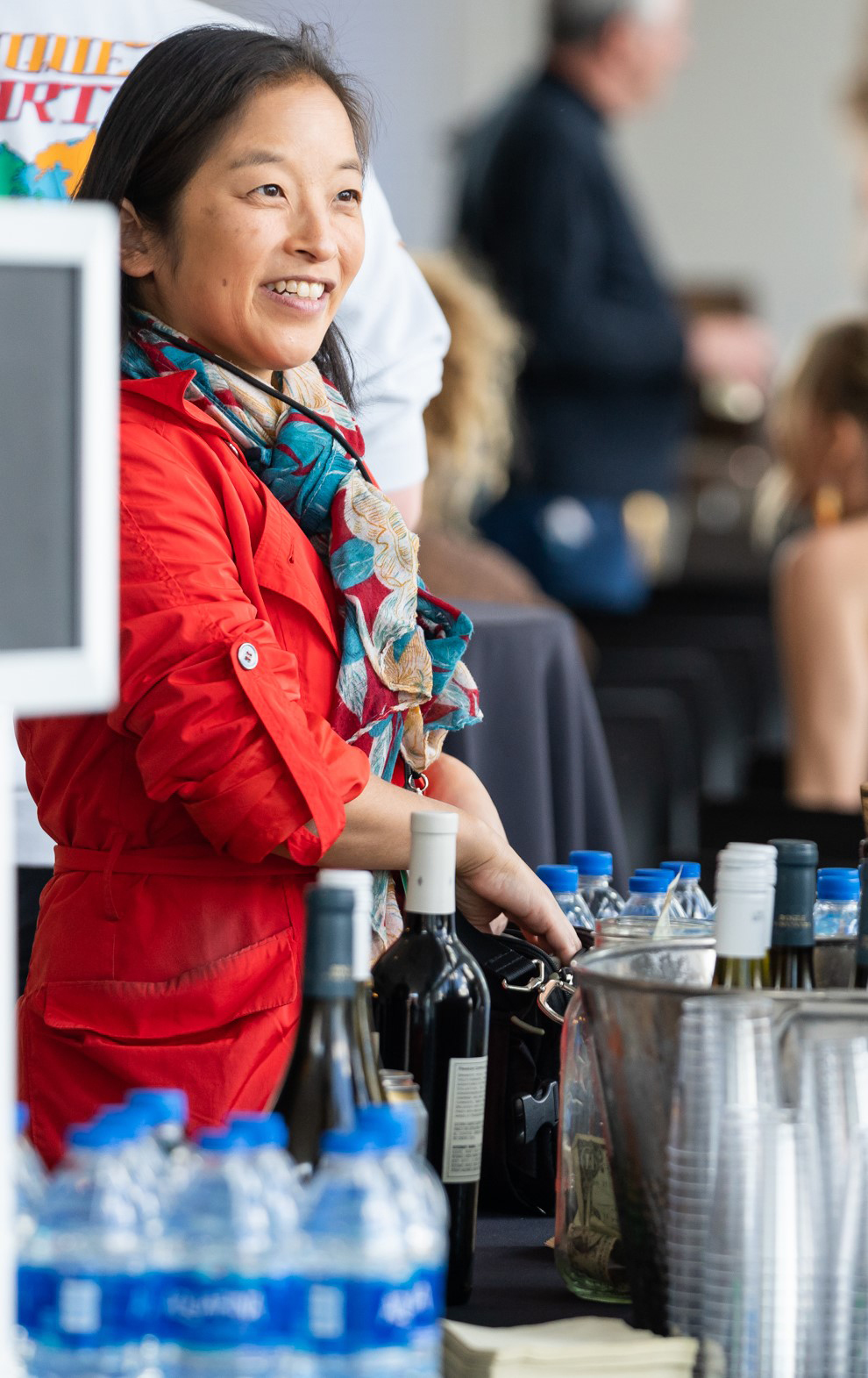
"Over the past 10 years," Park writes, "I've been engaged with this work in a global context through OneBeat. Through it all, I've been interested in the question of: What impact, if any, can artists have on strengthening communities? And what are the possibilities, challenges, and potential of artist engagement in today's touring structure, where artists come in and out of cities and towns so quickly to perform?
"I think more and more performing artists and presenters are asking this question these days - there is an interest in increasing opportunities for meaningful interaction and relationship-building in performance and touring structures."
It turns out Chicago musician/visual artist/educator/activist Damon Locks had similar questions. His four-year-old band, Black Monument Ensemble, had spent more than half its existence under COVID isolation. Locks said he had been wondering, "As we enter out into the world and we play shows again, what does it look like to forge stronger connections? This is ultimately what I think Black Monument wants to be. We want to build community and form connections and tell stories. And I want the music to be the evidence of that work. So, the goal isn't just making good songs. The goal is to show the evidence of the community and the conversation and the collaboration."
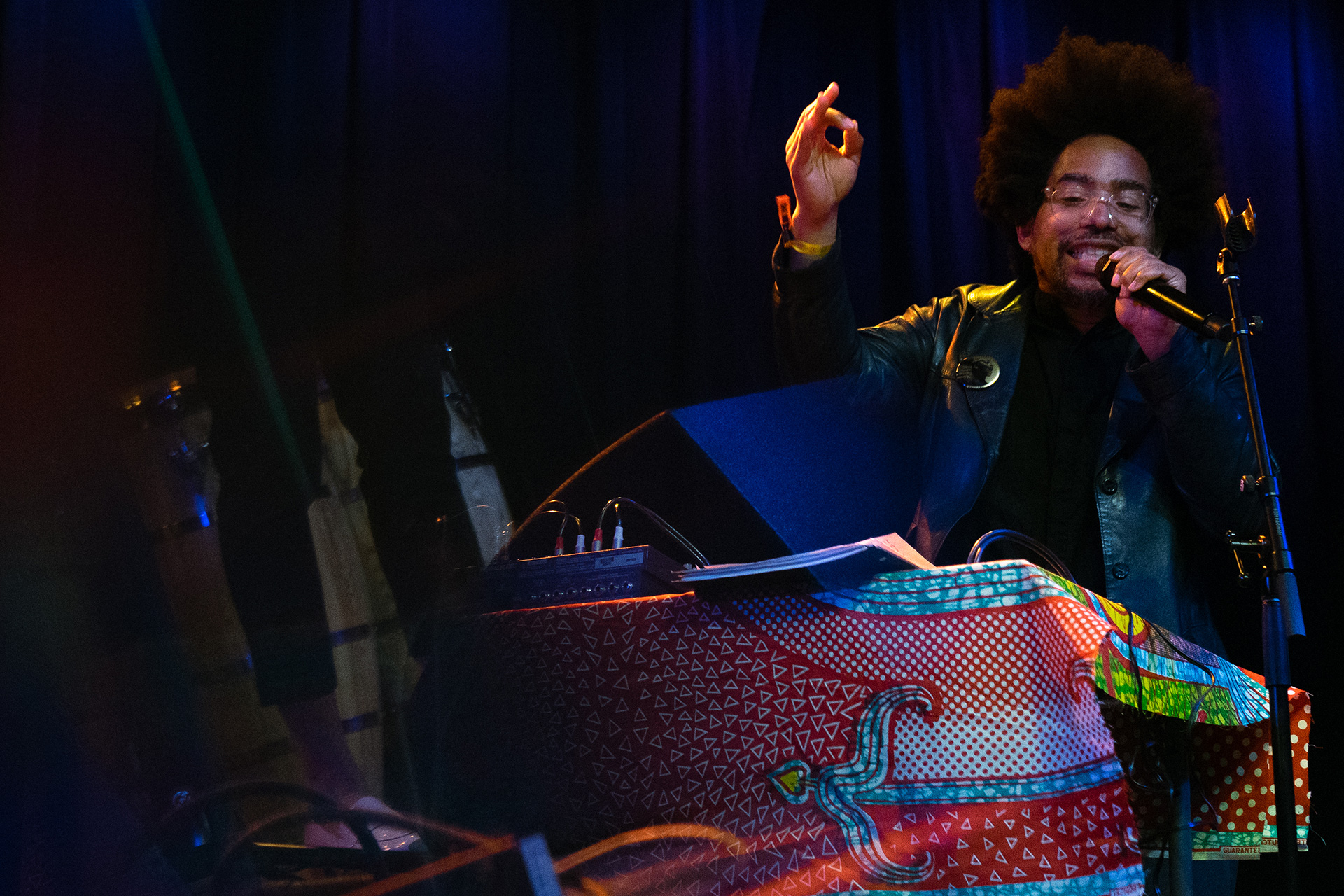
"You must use the moment in depth. Time is just the difference between knowing now and knowing nothing. Because if you know now fully, it's past, present and future."
- Mattie Humphries, Philadelphia Community Exchange Center (1968)
This quote appears in both the liner notes to Black Monument's most recent album Now and as a sample in the closing track "The Body Is Electric." It represents the group's dedication to uncovering histories that have been forgotten or intentionally erased.
Percussionist Arif Smith expressed it succinctly: "Archival research is key to our process."
Black Monument is also steeped in community activism, with members teaching art in prison, working with Chicago's longstanding Old Town School of Folk Music, and incorporating the Chicago Children's Choir and youth dance company Move Me Soul in their recordings and performances.
History. Community. Knoxville is rich in both.
~~~
"We've thought long and hard about how we want to be available and accessible to communities in Chicago. But this is the first time that Black Monument Ensemble has taken on something like this."
-Damon Locks
COVID scuttled a scheduled January visit, but a trio of Locks, Smith and cornetist Ben Lamar Gay made the most of festival week to dig into Knoxville history and explore potential partnerships. (The band membership ranges from five to a dozen or more, depending on the context.)
The week kicked off with some shared performances and a good meal among new friends at The Bottom, a community center founded in 2019. The Bottom houses a bookshop, tea room, community podcast studio, research room and a creative art workshop. Situated in - and named after - one of the Black neighborhoods devastated by urban renewal, The Bottom is emerging as a vital hub for Knoxville artists and activists.
As the week progressed, Black Monument visited the Highlander Research and Education Center in New Market, Tennessee, about 20 miles east of Knoxville. The list of American heroes who have gathered at Highlander is long. Rosa Parks trained there during the summer before she refused to move to the back of the bus. The list goes on: Septima Clark. Ralph Abernathy, John Lewis, the Rev. Dr. Martin Luther King Jr.
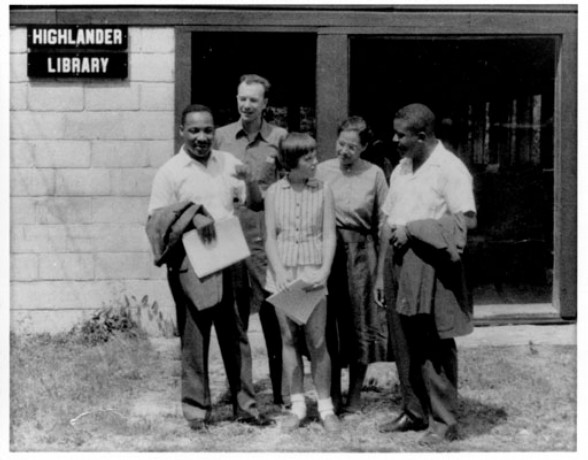
Charis Horton, daughter of Highlander founders Myles and Zilphia Horton, with Martin Luther King Jr., Pete Seeger, Rosa Parks and Ralph Abernathy
More history: Myles and Zilphia Horton founded Highlander in 1932 as a labor/environmental/civil rights activism training school. It was based in Monteagle until the State of Tennessee padlocked the center in 1961 amid accusations of race mixing and Communist tendencies. It re-opened in Knoxville and was promptly greeted by KKK protests. Rocks through the front windows were commonplace; a couple of firebombs came through, too. Police raids. Night and day phone threats. Jobs lost for associating with the center. Just your average, all-American purge campaign. All to shut down a place where Pete Seeger learned the words to "We Shall Overcome."
In 1972, urban renewal accomplished what the local hoodlums could not. Highlander moved to New Market to continue its work where, in 2019, the building housing the executive offices and a large portion of the center's archives burned to the ground. White supremacist graffiti was found at the scene.
Three years later, law enforcement continues to puzzle over the fire.
~~~
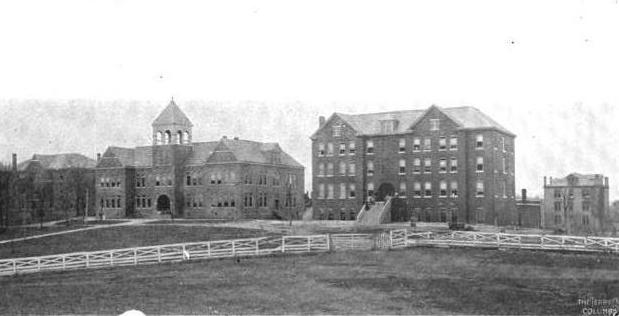
Damon Locks made special mention of the band's visit with Dr. Dasha Lundy, executive vice president at Knoxville College. Students from the College had played a prominent role in the desegregation protests of the early 1960s. As with many HBCUs, these students were instrumental in knocking down many of the more blatant expressions of Jim Crow. Public spaces such as segregation theaters and restaurants were opened to Black patrons, though school desegregation did not occur until 1972.
This once vibrant HBCU, founded in 1875, had dwindled to a total enrollment of 11 students by 2015. Many buildings are crumbling. Plans to renovate the campus - with an eye toward regaining full accreditation - include affordable housing for students and young adults in the community. The college's history and ambitious vision, coupled with its physical deterioration, represent ideal conditions for an extended partnership.
"Before I got here," Locks said, "I didn't know anything about Knoxville College. As a result of this trip, I'm like, Knoxville College has gotta come back. That's a place I can see us spending some energy. Is there some way we can be in service of that? Being from someplace else could be helpful in that regard."
"I mean, I know it's not Chicago. But I care about their future like I care about someone in Chicago's future. It's part of our story as well. It's just the part we didn't know about. So, once you hear what happened here - the urban renewal program, right? Chicago has a different version of that. It's like your cousins or family members you don't know but you're connected to anyway. Because this is all the story of Black people in the United States."
On Wednesday, Locks, Gay and Smith let me join their tour of the Beck Cultural Heritage Center, a nonprofit museum and history center housing some 50,000 artifacts from Knoxville's Black history. The one-time home of the first Black family to live in the neighborhood, it was the target of frequent cross burnings and KKK intimidation. As the Mountain View Urban Renewal Project devoured East Knoxville, the home became a site office for the urban renewal crew until a citizens group bought it in 1975 to house the Beck Center.
One of Beck's core projects is to document the disruptions of urban renewal - which the late James Baldwin referred to as "Negro removal" - in Knoxville. Their Beck Cultural Corridor initiative aims to preserve the history of a neighborhood torn asunder in the name of progress.
The story is American as apple pie, with the burden of displacement and erasure falling primarily upon minorities and poor people. In the name of progress, urban renewal cleared 518 families from the Bottom neighborhood, but aside from new police and fire stations and the General James White Memorial Civic Auditorium and Coliseum, most of the area's 670 bulldozed acres sat undeveloped for decades.
Fun fact: In 1813, auditorium namesake General James White led the Hamilton District militia - under orders from General Andrew Jackson - to "depopulate" several nearby Muscogee villages. In the name of progress. Plus ça change, and all that jazz.
More fun: The Gem Theater was the primary movie house for Knoxville's Black residents before nominal desegregation. It was torn down to make way for yet another multi-lane freeway, the James White Parkway. The site is now a free-run dog park with signs encouraging pet owners to clean up after Fido.
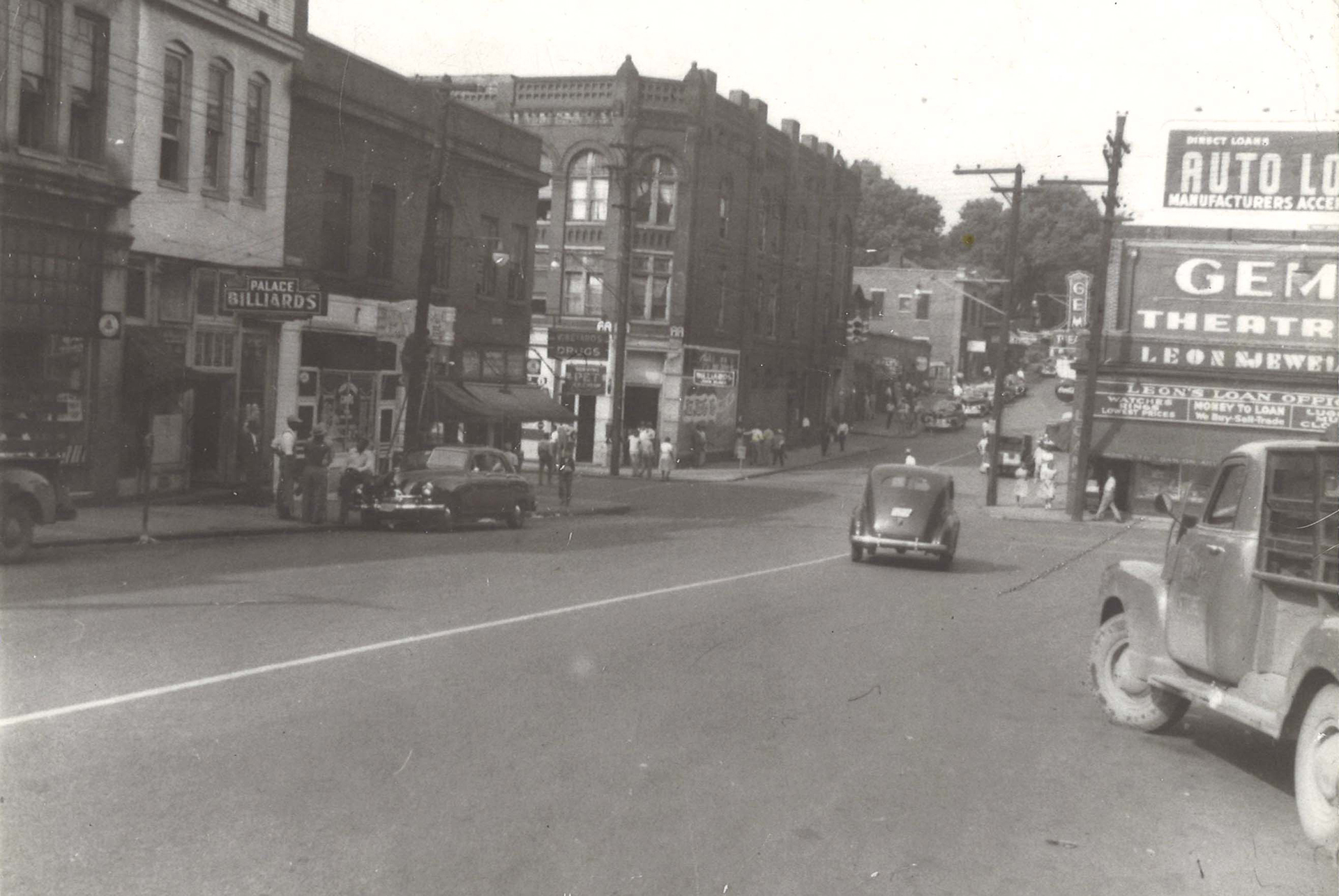
Our tour included a look into archives of genealogy records, copies of Green Books, paintings, maps, examples of horrifically racist advertising, and so on. This proximity to remnants of human lives - some lived fully, others constrained or cut short by Jim Crow - put the trio in a pensive mood: comments barely audible, observations offered in fragments with another finishing the thought with a fragment of his own.
As we wrapped our tour, Beck's ball-of-fire director, the Rev. Renee Kessler, arrived from a long shift sifting through artifacts at Knoxville College. Her morning excavations required a hazmat suit to ward off mold and decay. She was clearly amped up from her treasure hunt, excited about the possibilities of preserving the fragments she found, but concerned that time was passing too quickly to salvage even a fraction of the legacy.
Even so, the reverend was an exuberant ambassador, interested in hearing what the trio was up to and excited to talk about Beck's expansion plans and the upcoming reception for Nikki Giovanni. And always circling back to Knoxville College's jeopardized legacy.
She described a disintegrating photograph she found, adding quietly, "Sometimes I feel I have no right to even touch these objects, they are so sacred."
Ben Lamar Gay said, "No, ma'am, that's not true. I believe that when you hold one of these objects in your hands, especially one that has been lost for so long, that you honor it by giving it life and relevance. If you had not picked it up, it would still be dead."
The trio loaded up for a trip to the Alex Haley Farm, the author's final home, which now serves as a training center for the Children's Defense Fund. I felt I had imposed long enough, so instead, I visited Alex Haley Heritage Square in East Knoxville to spend a few minutes with a 13-foot, two-ton, bronze statue of Haley. There he sits, facing the Smoky Mountains, with an open copy of Roots as if reading aloud to anyone with ears to hear.
A line from Black Monument's "The Body is Electric" came to mind:
Listen close to the stories told
And we know what is in our reach.
~~~
Black Monument packed the Mill & Mine on Friday and blew the roof off the joint. One burner was this song Damon introduced as "a new one I wrote this week" about his Knoxville experience. "The distance between you and I is a fiction," he sang. "What we are speaking of is proximity/Proximity creates empathy/A closeness/A closeness in heart, nerve, and mind
I'd bet all the money in my pockets that Black Monument will return to Knoxville sooner rather than later.
~~~
The day after the festival ended, I met Ashley Capps at the Big Ears office. The Big Ears founder was justifiably tired and satisfied with a job well done. Attendance numbers for both the paid and free events set records for the festival and, aside from some minor technical hiccups, everything pretty much went according to plan.
"I've been lucky to have the opportunity to try to build a sense of community here in my hometown," he said. "So, the real question I've found myself asking as I plan the festival every year is, how can we do more of that? I still feel like it's a never-ending process."
~~~
There is an enormous store of good will and courage in our world that is easy to miss amid the noise and horror that often suggests chaos has the upper hand. Hope is hard work.
As I've argued throughout this series, people who come together around the creative impulse - musicians, painters, dancers, puppet makers, teachers and others who work to create the conditions for meaningful connection - are essential culture warriors who keep the sparks alive and stand against darkness to declare, "We are here to create, to play, to love. And you can't stop us."
The work of people like Black Monument, Rev. Kessler, Dr. Lundy, and our friends Elena and Ashley at Big Ears - and legions of people working tirelessly to preserve and document the true heritage of America, good and bad - is critical to answering the central challenge facing our nation: Are we, at long last, to become a mature, collaborative society that accepts responsibility for our shared histories, faces the often-harsh reality of the now, and strives together to reimagine our shared futures?
Elena imagines it. "I think it happens when we combine effort and curiosity with listening and humility and are honest with ourselves about who we are and what we bring to the table."
I go back to Capps' comment: "I still feel like it's a never-ending process."
That comment is either glass half-full or glass half-empty. How about it?
"I leave Sisyphus at the foot of the mountain! One always finds one's burden again. But Sisyphus teaches the higher fidelity that negates the gods and raises rocks. He too concludes that all is well. … The struggle itself toward the heights is enough to fill a man's heart. One must imagine Sisyphus happy."
- Albert Camus, The Myth of Sisyphus
If we are lucky, we will roll the stone up the mountain again, and then again and again, so that creativity and hope and - dare I say it? - love can find big ears to hear and open eyes to see.
Is true community possible, grounded in the now, anticipating the future, and engaged in honest reckoning with the past?
Hell, crazier things have happened.
Rob Rushin-Knopf blogs about culture at Immune to Boredom. For more on Black Monument's music, check his latest post.

